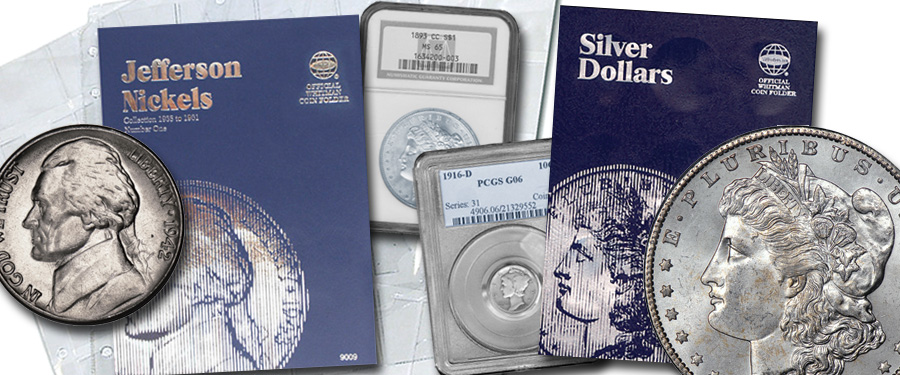
Recently a long-time client and an enthusiastic buyer of most all of my books, O.C., wrote to say: “I love having an album of ‘raw’ coins. My collection of Washington quarters looks fabulous that way. But I would like to ask for some advice. I want to have my Morgan dollars in an album too. Would it be foolish to buy certified coins, crack them out, and place them in an album? I would keep the descriptive labels about each coin with it. Or, should I keep the coins slabbed? Do you think cracking the coins out of the holders is a bad idea? I believe strongly that the coins, well chosen, should stand up on their own, slabbed or not. What do you think?”
This a perplexity for many people. Without doubt there is something special about having unslabbed coins in albums. I have, for example, a collection of Jefferson nickels from 1938 onward, mounted in an album, which takes very little space on the bookshelf. The collection is not particularly valuable and cost me only in the hundreds of dollars. I enjoy looking at the nickels now and again, such as the innovative designs of the first year of the current century. If these nickels were to be certified I would need to have a suitcase to hold them, and would not be able to enjoy them very much.
With regard to Morgan dollars, a basic set of them comprises nearly 100 varieties as listed in the Guide Book of United States Coins. These fit nicely into a couple of albums. I do not have such a set, but if I did I would certainly prefer it to be in albums where I could flip through the pages and study each side of the coins carefully. However, practicality intervenes. Certified holders such as those by PCGS or NGC do have important advantages. First they seal the coins so that owners cannot dip the, clean them, or otherwise change their appearance. The majority of Proof Morgan dollars, for example, are in grades ranging from Proof-63 to Proof-65 or Proof-66. Nearly all of them, upon close inspection, have some microscopic hairlines. These are from cleaning and dipping. If certified holders had been invented in 1878 and Proofs had been placed in them from that time onward, every coin in existence would be a superb Gem. At least the present certification stops the cleaning process. Going back a few decades, it was common practice for collectors to dip coins regularly when they naturally retoned.
Another advantage is that it gives coins an instant market value. If you were to have an 1886-O Morgan dollar, a condition rarity that is quite elusive in, say, MS-63 grade, and if it were to be certified, it would have a standard value. On the other hand, if it were to be offered with the comment that John Doe graded it MS-63, buyers would be few. What if it were sent to a certification service and graded only MS-61 or MS-62? Look the values up in the Guide Book and you will see what a large price difference a small difference in grading can make.
Fortunately Morgan dollars are a bit different from Jefferson nickels or Lincoln cents. A collection of nearly 100 different is more manageable in certified holders. There are transparent notebook pages available that allow multiple “slabs” to be placed on a single sheet, meaning that a group of several notebooks can handle a collection nicely.





